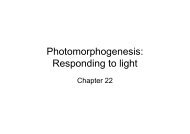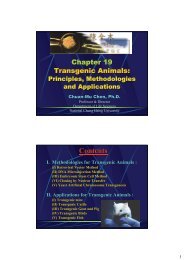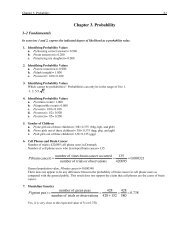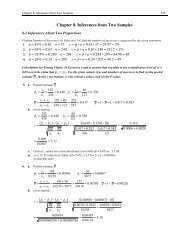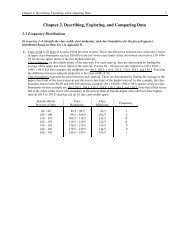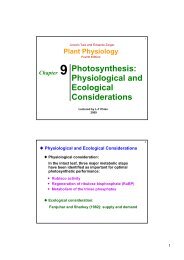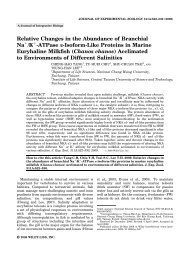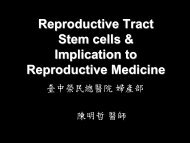Chapter 7. Hypothesis Testing with One Sample
Chapter 7. Hypothesis Testing with One Sample
Chapter 7. Hypothesis Testing with One Sample
You also want an ePaper? Increase the reach of your titles
YUMPU automatically turns print PDFs into web optimized ePapers that Google loves.
212 <strong>Chapter</strong> 7: <strong>Hypothesis</strong> <strong>Testing</strong> <strong>with</strong> <strong>One</strong> <strong>Sample</strong>18. Fruit FliesFirst, we check the requirements. The sample does not appear to be a simple random sample, but the fruit fliesmay comprise a random sample that is representative of the population. The conditions for a binomial aresatisfied. The sample size is 80 <strong>with</strong> the claim that the percentage of offspring <strong>with</strong> normal wings is differentthan 75%, making p = 0.75, so np = 80 × 0.75 = 60 and nq = 80 × 0.25 = 20. The requirements are satisfied.The claim is that the percentage of offspring <strong>with</strong> normal wings is different than 75%, so this is a two-tailedtest. As stated, p ˆ = 0.85.H 0 : p = 0.75H 1 : p 0.75 ≠The test statistic is z = p ˆ − p 0.85− 0.75= = 2.066pq 0.75× 0.25n 80In a two-tailed test at the 0.01 significance level, the critical values are ±z α /2=±z .005=±2.575.Since this is a two-tailed test and the test statistic is to the right of center, the P-value is twice the area to theright of the test statistic. Using Table A-2, we find that the P − value = 2 × (1 − 0.9808) = 0.0384 .We fail to reject the null hypothesis.There is not sufficient sample evidence to warrant rejection of the claim that the percentage of offspring <strong>with</strong>normal wings is different than 75%.19. Using Confidence Intervals to Test <strong>Hypothesis</strong>a. First, we check the requirements. The sample is a random sample. The conditions for a binomial aresatisfied. The sample size is 1000 <strong>with</strong> the claim that the proportion of zeros is 0.1, making p = 0.1, sonp = 1000 × 0.10 = 100 and nq = 1000 × 0.90 = 900. The requirements are satisfied.The claim is that the proportion of zeros is 0.1, so this is a two-tailed test. In the sample, 119 were zero.The sample proportion is p ˆ = x / n = 119 /1000 = 0.119.H 0 : p = 0.1H 1 : p 0.1 ≠The test statistic is z = p ˆ − p 0.119 − 0.1= = 2.003pq 0.1× 0.9n 1000In a two-tailed test at the 0.05 significance level, the critical values are ±z α /2=±z .025=±1.96.There is sufficient evidence to warrant the rejection of the claim that the proportion of last digits in weightsis 0.1.b. The preliminaries are the same as in part a.H 0 : p = 0.1H 1 : ≠ p 0.1The test statistic is z = p ˆ − ppqn0.119 − 0.1= = 2.0030.1× 0.91000Since this is a two-tailed test and the test statistic is to the right of center, the P-value is twice the area to theright of the test statistic. Using Table A-2, we find that the P − value = 2 × (1 − 0.9772) = 0.0456.There is sufficient evidence to warrant the rejection of the claim that the proportion of last digits in weightsis 0.1.c. We use the information from part a. On page 261, the table of confidence levels and critical valuesindicates that for a confidence level of 95%, the critical value is 1.96. The margin of error is given byp ˆ q ˆE = z α 2 n = (1.96) (0.119)(0.881)= (1.96)(0.010) = 0.020.1000So the confidence interval is( p ˆ − E, p ˆ + E) = (0.119 − 0.020,0.119 + 0.020) = (0.099,0.139)The confidence interval seems to suggest that the proportion of zeros being 0.1 is not out of the question.d. They do not all lead to the same conclusion. The two hypothesis tests lead to a rejection of the nullhypothesis but the confidence interval does not support that result.




